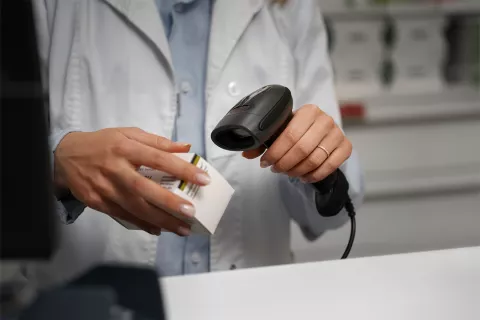
In July 2022, the United States Food and Drug Administration (US FDA) issued draft guidance titled ‘Human Prescription Drug and Biological Products - Labeling for Dosing Based on Weight or Body Surface Area for Ready-to-Use Containers - “Dose Banding.” It is to help sponsors include dose banding information in drug labeling for ready-to-use containers in New Drug Applications (NDAs), Biologics License Applications (BLAs), or supplements to those applications. This guidance won’t be applicable to Abbreviated New Drug Applications (ANDAs).
Dosing a pharmacological product depending on the weight or the Body Surface Area (BSA) is referred to as dose banding. Using this technique can significantly reduce the "drug waste" from the single-dose vials and will also reduce the effort of calculating and extracting partial doses from the vials.
Labeling must include clear instructions for healthcare practitioners on how to prepare and administer the drug product, including information on how to establish the strength(s) of ready-to-use containers the patient should receive based on the weight or the BSA. The guidance’s suggestions and examples apply when an applicant:
- seeks to develop ready-to-use containers of varying strengths
- attempts to add dose banding information into the proposed drug product's prescription instructions based on the dosing information from a previously approved drug product that is based on weight or BSA
Applicants who want to incorporate dose banding information in labeling must provide adequate proof of safety and compelling evidence of effectiveness. The application (or additional application) should include data explaining and justifying the acceptance of the discrepancies between the planned to-be-administered dose in the ready-to-use containers (i.e., dose banding) and the actual weight or BSA-based dose from the approved drug product. Applicants are encouraged to consult with the appropriate FDA review division during the drug development about their proposals to describe dose banding information in the labeling, including any clinical and/or scientific data to validate the proposed dosing and administration recommendations.
If dose banding information is included in the labeling, it should be presented in the ‘DOSAGE AND ADMINISTRATION’ section alongside the previously approved recommended dose based on the weight or the BSA. The clinical and/or scientific evidence supporting the use of dose banding may be given in the ‘CLINICAL PHARMACOLOGY’ section where applicable. The ‘DOSAGE AND ADMINISTRATION’ section should provide instructions on choosing the proper ready-to-use container(s) to achieve the prescribed dose. It may be necessary to offer suggestions for cases where the weight-based or BSA-based dose falls outside the dose range for which the ready-to-use containers are supplied.
Consider an example where the recommended dosage of Drug-X is 500 mg/m2 and is to be administered intravenously over thirty (30) minutes every four (04) weeks. Doses administered using Drug-X infusion bags may vary from the BSA-calculated dose by up to 5%. Select the Drug-X infusion bag(s) based on the patient’s BSA as described in the below table. The drug is not recommended for use in patients with a BSA of less than 1.05 m2. Dosing for such patients is not possible with Drug-X infusion bags because the lowest available strength (infusion bag containing 550 mg per 55 mL (10 mg/mL)) exceeds the BSA calculated dose by more than 5%.
BSA Range | Calculated Dose Range | DRUG -X Infusion Bag (s ) (10 mg/mL ) |
Less than 1.05 m² | Not recommended | |
1.05 to 1.15 m² | 525 mg to 577 mg | 550 mg |
1.16 to 1.25 m² | 578 mg to 627 mg | 600 mg |
1.26 to 1.35 m² | 628 mg to 677 mg | 650 mg |
1.36 to 1.45 m² | 678 mg to 727 mg | 700 mg |
1.46 to 1.55 m² | 728 mg to 777 mg | 750 mg |
1.56 to 1.65 m² | 778 mg to 827 mg | 800 mg |
1.66 to 1.75 m² | 828 mg to 877 mg | 850 mg |
1.76 to 1.85 m² | 878 mg to 927 mg | 900 mg |
1.86 to 1.95 m² | 928 mg to 977 mg | 950 mg |
1.96 to 2.05 m² | 978 mg to 1027 mg | 1000 mg |
2.06 to 2.15 m² | 1028 mg to 1077 mg | 1050 mg |
2.16 to 2.25 m² | 1078 mg to 1127 mg | 1100 mg (550 mg and 550 mg ) |
Source: https://www.fda.gov/media/160036/download
The guidance was open for public comments until September 19, 2022, after which the FDA has collated all the comments and is currently in the process of finalizing the guidance. It is to be finalized very soon, and the manufacturers of ready-to-use containers will be expected to update the product information on all the labels. Therefore, it is recommended that the manufacturers prepare to comply with the guidance.
Freyr can assist and support the manufacturers by:
- setting up and implementing labeling processes,
- Creating Core Patient Information Leaflets (Core PIL) and
- auditing existing labels, and updating the Prescribing Information (PI) on the labels according to the Health Authority requirements
Consult Freyr for compliance best practices.









